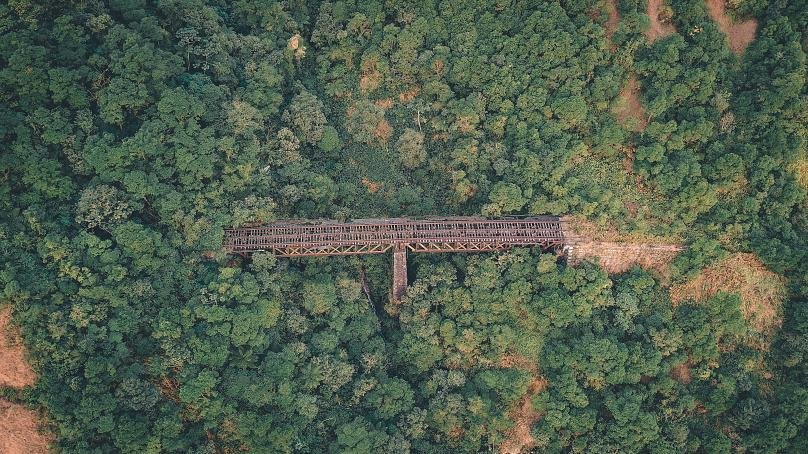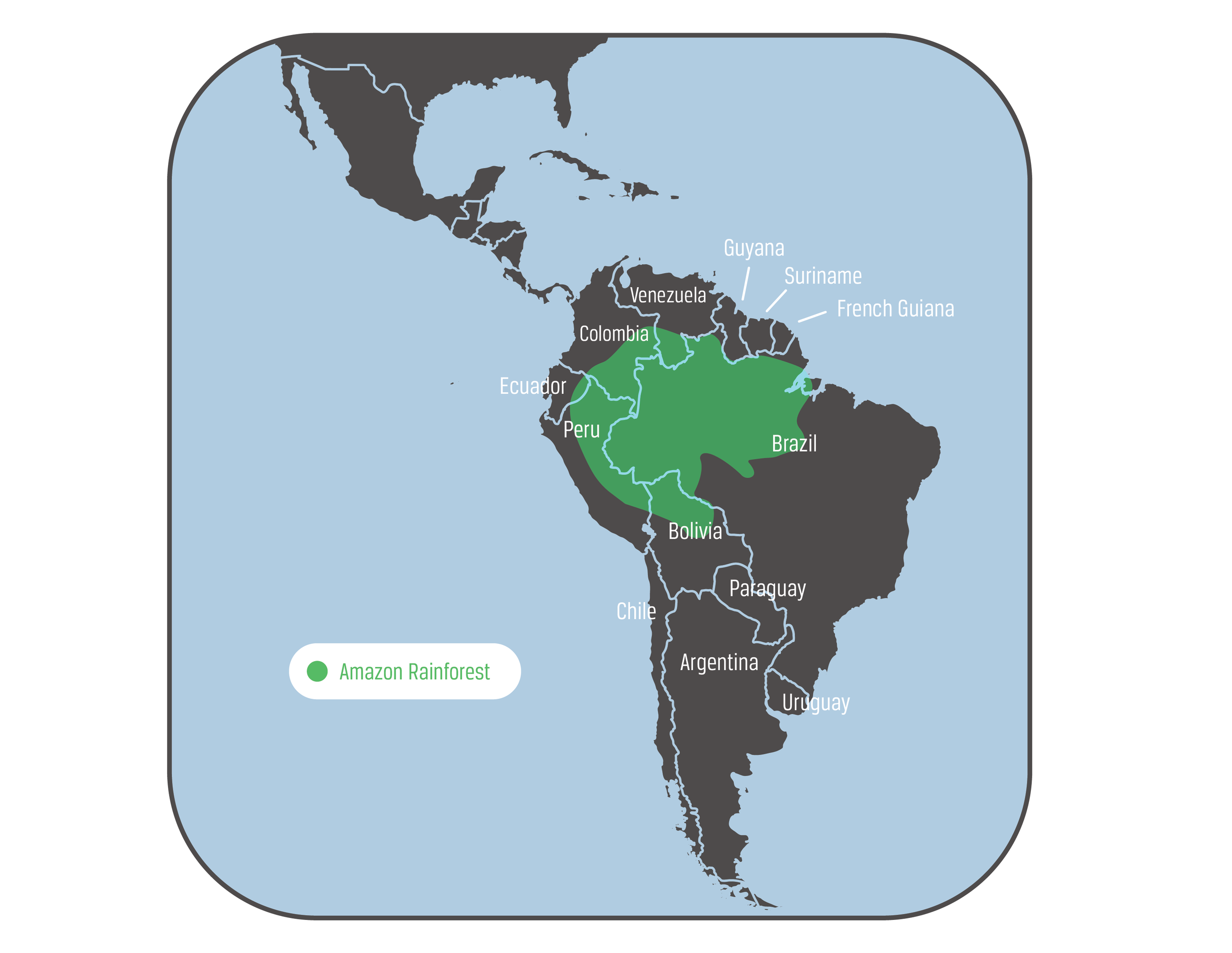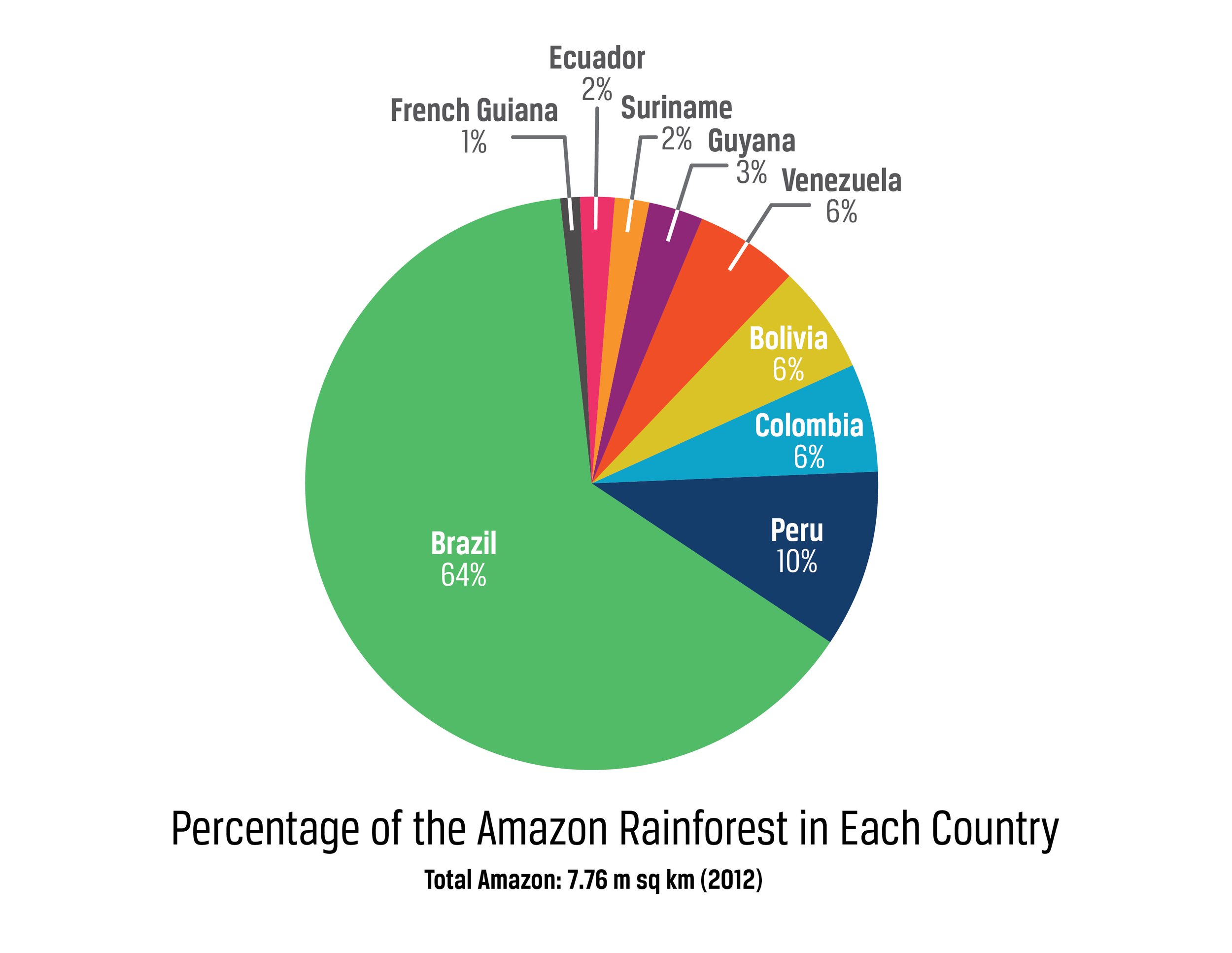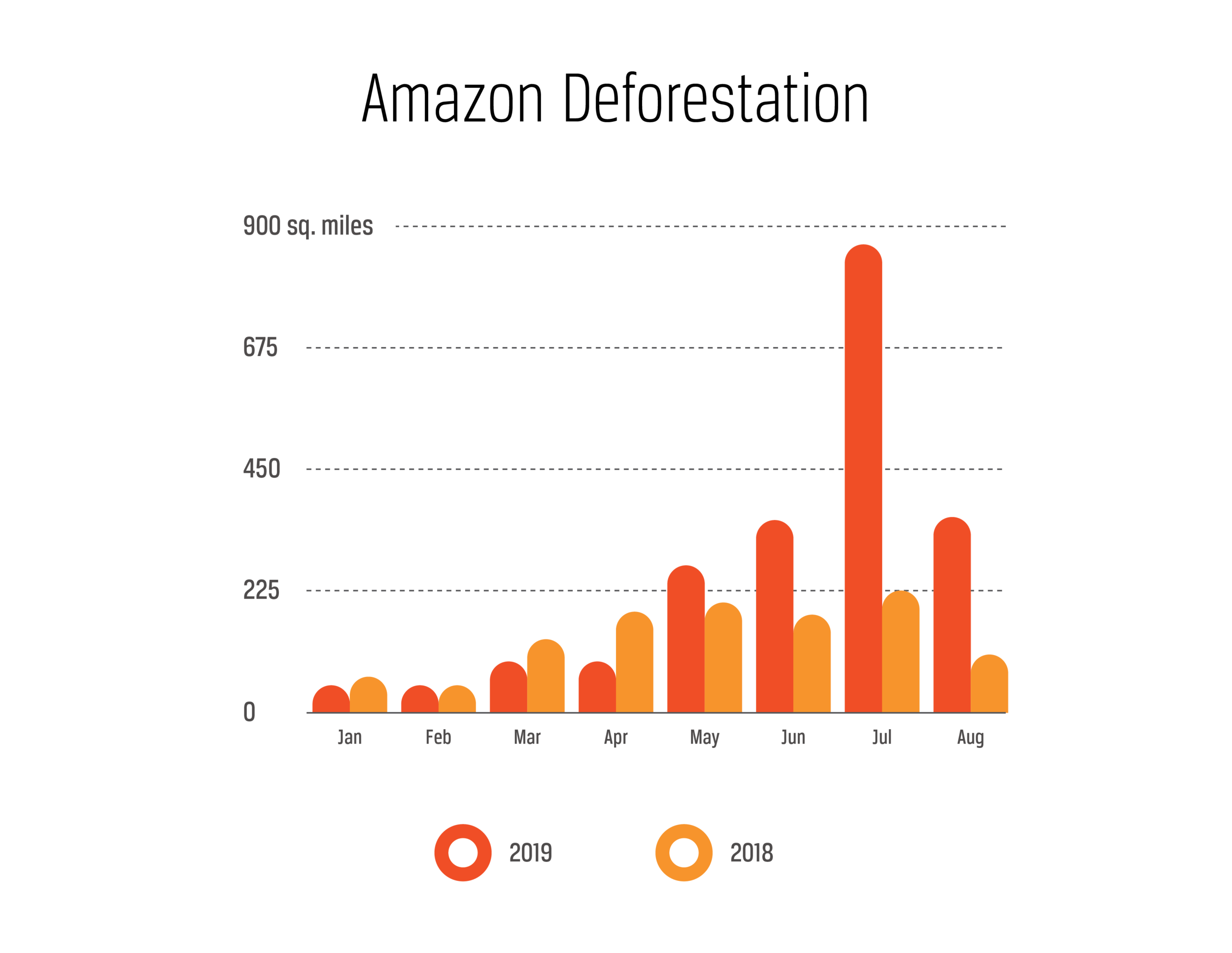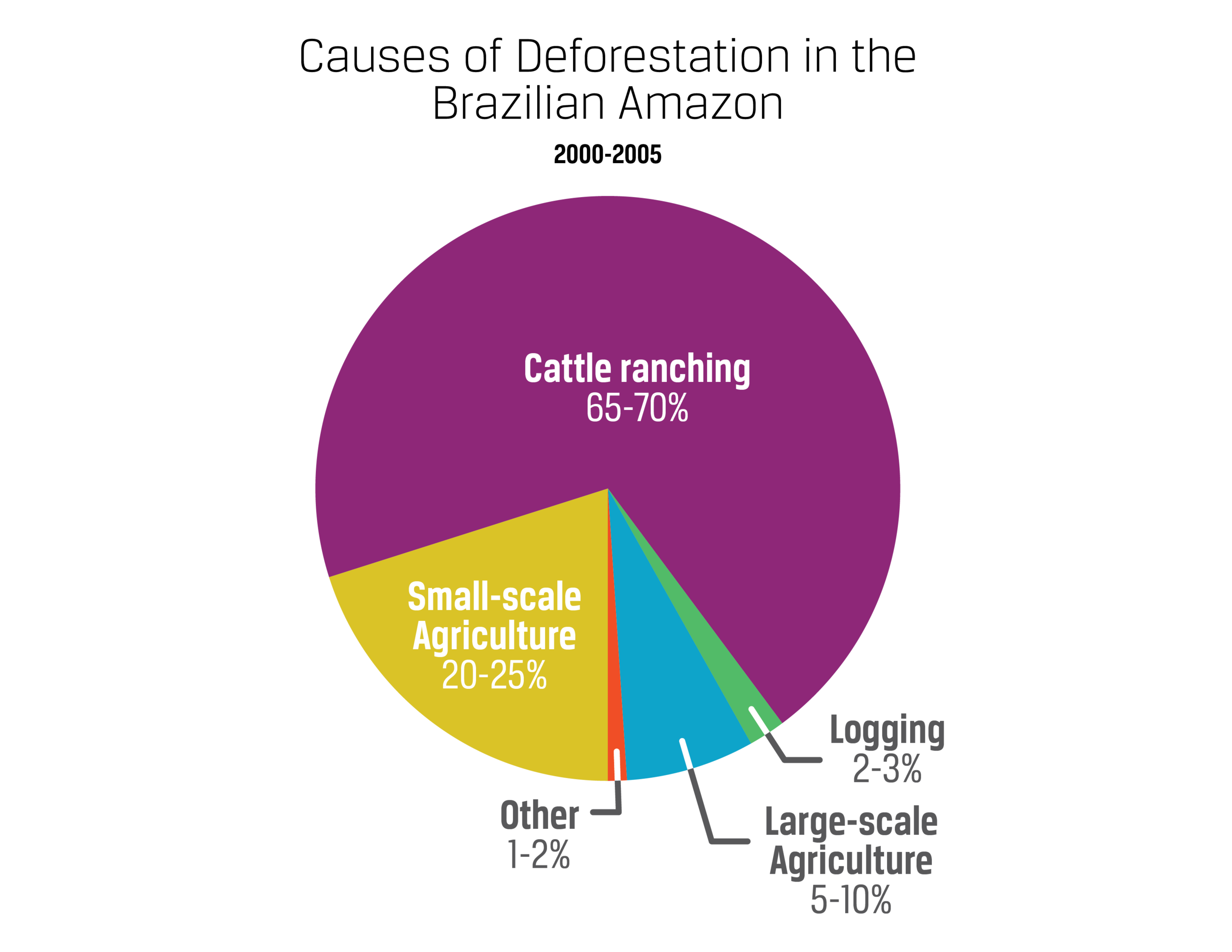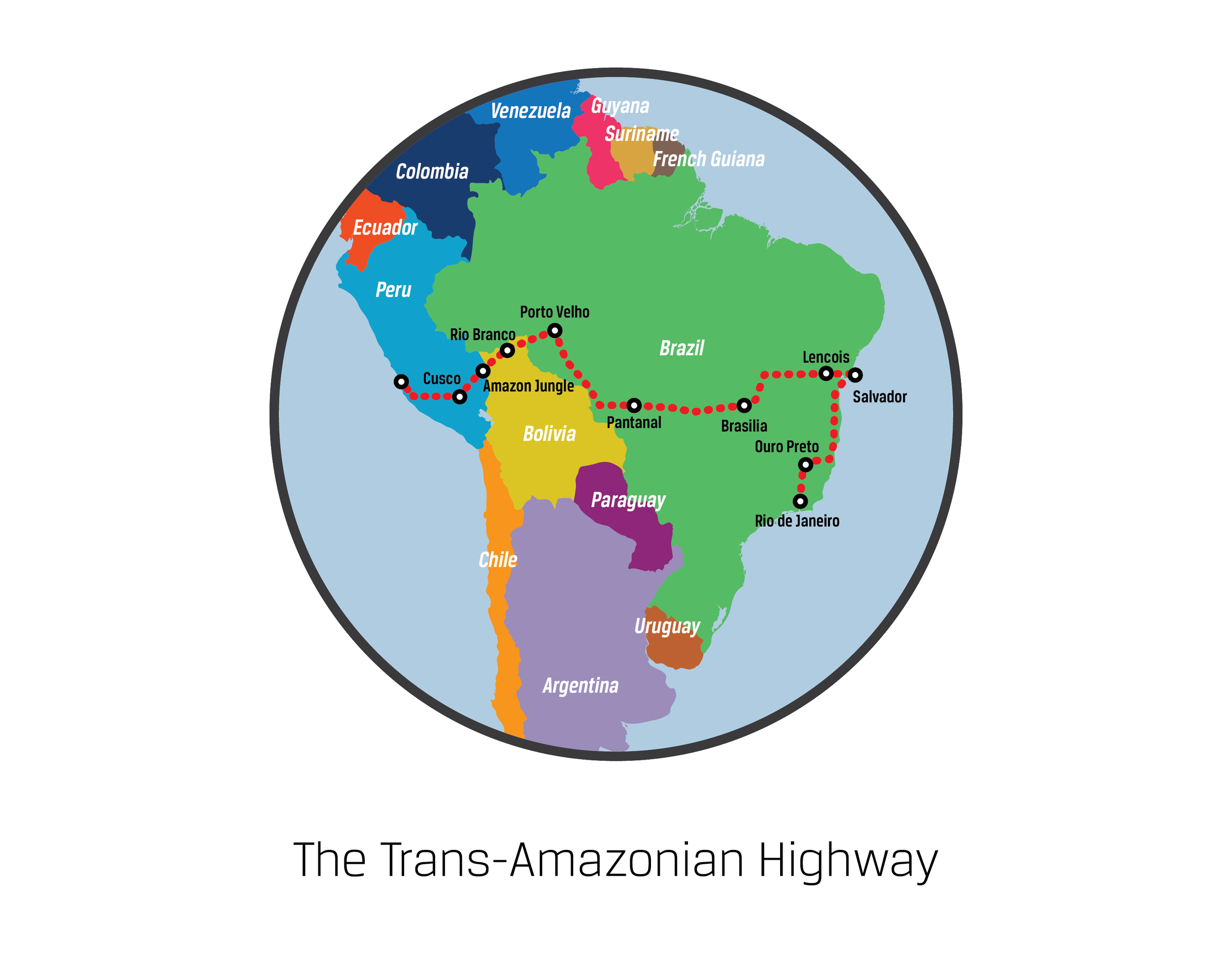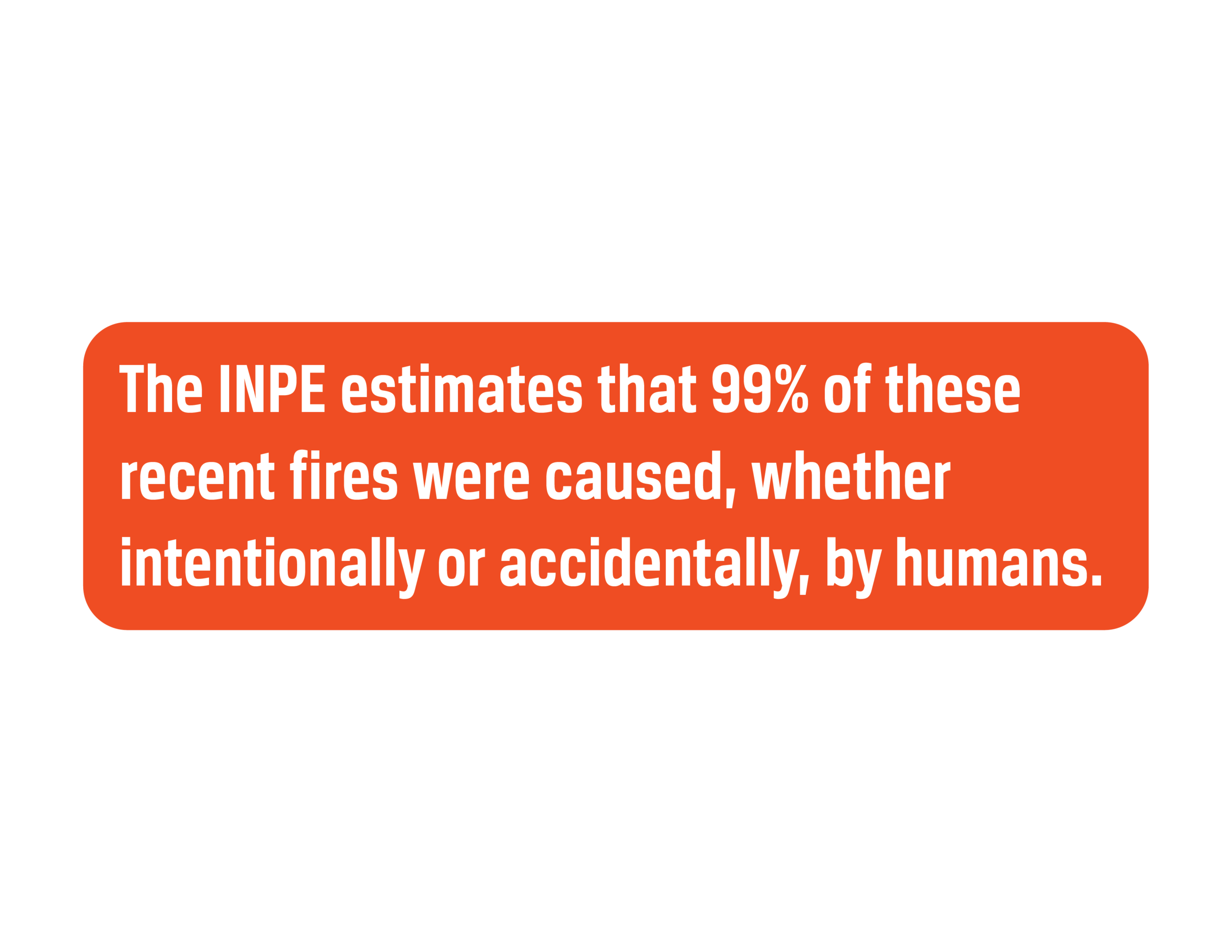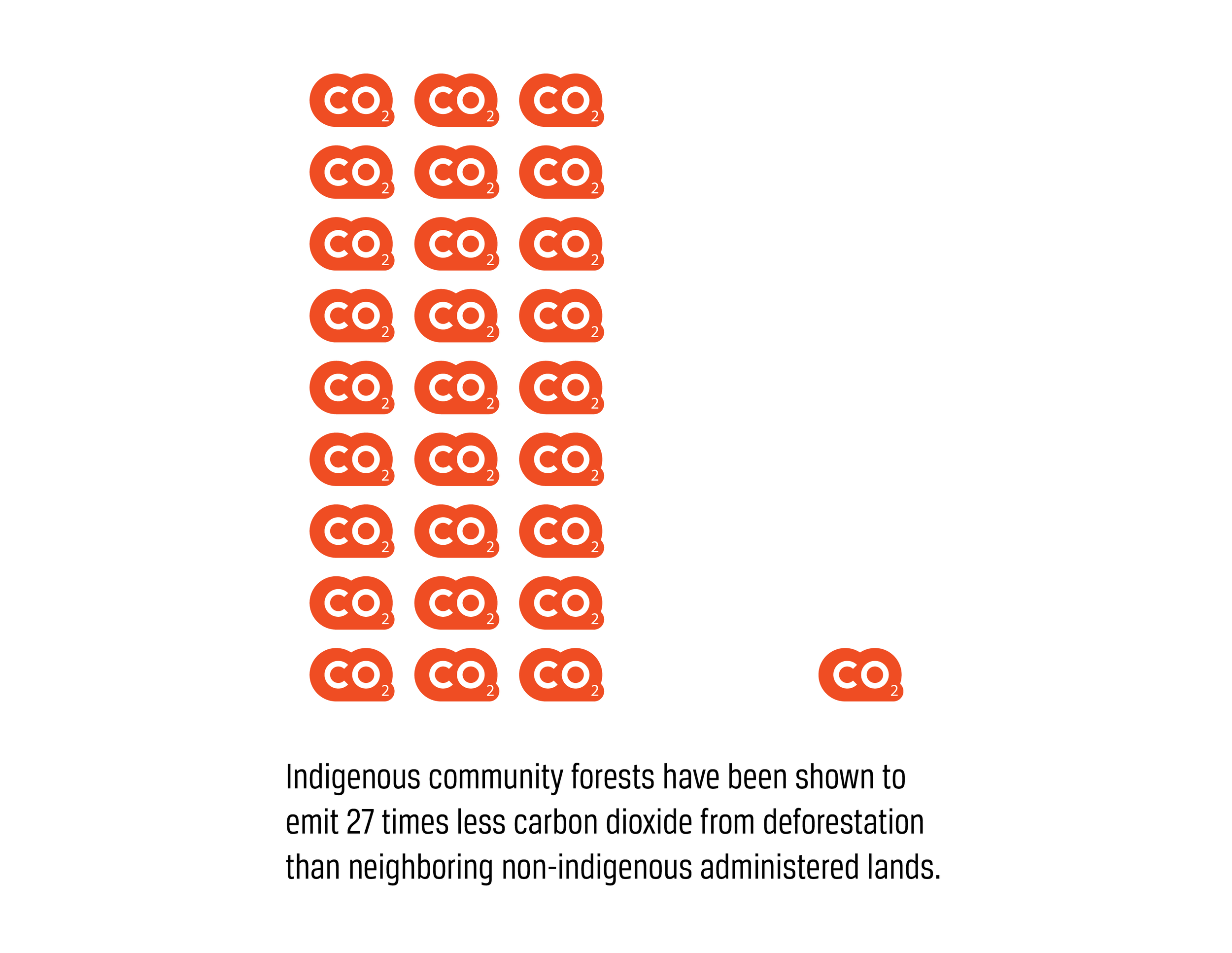Deforestation in the Amazon Rainforest
Photo by Sergio Sousa
By Brandon Wegrowski
Published Fall 2019
Special thanks to Sam Lofgran for editing and research contributions
+ Summary
Deforestation in the Amazon rainforest represents a critical issue in our modern world, as it is the root cause of many other problems that affect the entire planet. The Amazon’s deforestation is particularly relevant because it has been a chronic issue that has plagued the region for decades. Some of the key contributing factors include cattle ranching, infrastructure development such as roads, the building of many large dams, and small-scale subsistence farming. Consequences of deforestation in the Amazon include a significant loss of species and their habitats, a disturbance of indigenous peoples and their health, an increase in CO2 emissions, and a negatively altered water cycle around the globe. Many practices have been used to combat the issue, including increased monitoring of deforestation levels, expanding land rights and protection to indigenous peoples, land policy reform, and anti-deforestation legislation, but each have their own different strengths and weaknesses.
+ Key Takeaways
+ Key Terms
Amazon - A large tropical rainforest occupying the drainage basin of the Amazon River and its tributaries in northern South America, and covering an area of 2.3 million square miles (6 million square km). Comprising about 40% of Brazil’s total area, it is bounded by the Guiana Highlands to the north, the Andes Mountains to the west, the Brazilian central plateau to the south, and the Atlantic Ocean to the east. 1
Amazonia - The area around the River Amazon in South America, principally in Brazil, but also extending into Peru, Colombia, and Bolivia. The region comprises approximately one third of the world's remaining tropical rainforest. 2
Amazonia Legal (Legal Amazon) - An area of 5.2 million km, constituting all of the Brazilian Amazon. The Brazilian government created the Amazonia Legal designation in 1953 as a way to plan and promote the social and economic development of states in the Amazon region, which historically share the same economic, political, and social challenges. 3
Deforestation - The action or process of clearing forests. 4 The United Nations 2020 Global Forest Resources Assessment defines deforestation as “the conversion of forest to other land use independently whether human-induced or not.” 5
Desertification - The process by which fertile land becomes desert, typically as a result of drought, deforestation, or inappropriate agriculture.
Evapotranspiration - The process by which water is transferred from the land to the atmosphere by evaporation from the soil and other surfaces and by transpiration from plants.
Forest - Areas having more than 50% tree cover.6
Hectare - 1 hectare is about 2.47 acres.
Land Surface Albedo - The ratio of the solar radiation reflected from Earth's surface to the solar radiation incident upon it, which is critical to the regulation of Earth's surface energy budget. In essence, land surface albedo is a measurement of the "whiteness" or reflectivity of the surface of the land.
Logging - The clearing (land) of trees to produce lumber.7
Mato Grosso - A large state in west-central Brazil most covered in Amazon rainforest.
Reforestation - The act of renewing forest cover (as by natural seeding or artificial planting of seeds or young trees).8
Slash-and-burn - Relating to or denoting a method of agriculture in which existing vegetation is cut down and burned off before new seeds are sown, typically used as a method for clearing forest land for farming,9 also called fire-fallow cultivation.
Uncontacted Tribes- Tribes who have had no peaceful contact with anyone in the mainstream or dominant society.
Context
Forests represent a critical part of our planet’s environmental health, and they affect the environment on many levels.10 Sustainably managed forests provide numerous goods and services11—the World Wildlife Fund estimates that 1.6 billion people worldwide depend on forests for their livelihood, 300 million of whom live in forests.12 Forest ecosystems are also home to 80% of the world’s terrestrial biodiversity, including countless species of plants and animals, many still yet to be discovered.13 Subsequently, deforestation affects the environment, the economy, and even human health.14 The Earth’s climate is especially affected, as deforestation emits CO2 into the atmosphere. But deforestation also has biophysical effects, including changes in land surface albedo, evapotranspiration, and cloud cover.15
The Amazon is the largest rainforest in the world as well as the largest river basin, spanning 670 million hectares16 across 9 South American countries: Bolivia, Brazil, Colombia, Ecuador, French Guiana, Guyana, Peru, Suriname, and Venezuela.17 The Amazon contains more species of plants and animals than anywhere else on the planet, and is believed to be the home of 10% of all species on Earth.18 Of the many plant species in the Amazon, 75% are unique to the Amazon. There are 3,000 different species of fish, which is the largest number of freshwater fish species in the world.19 Additionally, the Amazon rainforest is home to 34 million people who depend on its resources.20
The Amazon spans more than 670 million hectares, making it the largest rainforest in the world.
20% of the Amazon biome has been lost already, and it is estimated that 27% will be without trees by 2030 if the current rate of deforestation continues.
The Amazon rainforest is also the planet’s largest deforestation front.21 With 90-140 billion metric tons of carbon stored in the Amazon’s forests, deforestation breeds high potential for “large-scale, irreversible ecological disaster.”22 Already, 20% of the Amazon biome has been lost, and the World Wildlife Fund estimates that 27% of the Amazon biome will be without trees by 2030 if the current rate of deforestation continues.23 From 1978 to 2017, over 750,000 square kilometers (75,000,000 hectares) of the Amazon was destroyed.24 Between 2001 and 2012, forest losses in the Amazon biome averaged about 1.4 million hectares per year, totaling 17.7 million hectares, mostly in Brazil, Peru, and Bolivia. The country of Brazil is a key player in deforestation, and was responsible for 75% of the deforestation in the Amazon from 2001-2012.25
Contributing Factors
Government Involvement
One factor that influences Amazonian deforestation, as well as its other contributing factors, is government involvement. This takes the form of legislation, or lack thereof, that directly protects the forest, but also includes the policies surrounding logging permits, the process of designating protected lands, and the rules around businesses involved in the Amazon rainforest. These policies include penalties, fines, warnings, and seizures of equipment, or lack thereof, when legislation is violated. As the Amazon rainforest includes territory of 9 different countries, multiple governments are involved in its protection. However, the most influential government by far is the Brazilian government as 64% of the Amazon falls within its borders.26 27
Summer 2019 saw high rates of deforestation in the Amazon compared to previous years.
From 2004 to 2012, the Brazilian government put several legislative measures in place to protect the Amazon and, as a result, deforestation in the Brazilian part of the Amazon dropped to its lowest recorded levels.28 29 However, governmental power and its effects can quickly change and, since the most recent President of Brazil began his term on January 1, 2019, a few key statistics have noticeably decreased. Enforcement actions by the main environmental agency of Brazil dropped by 20% during the first 6 months of 2019, compared with the first 6 months in 2018.30 There was then a 39% increase in forest cover loss when comparing the similar January–July period between 2018 and 2019.31 Furthermore, in June 2019 alone, the rate of deforestation in Brazil rose 88% compared to June of the previous year.32 These data indicate that government involvement in policy creation and enforcement is an influential factor, and, subsequently, can play a role in many of the following contributing factors.
Cattle Ranching
Cattle ranching is the biggest single cause of deforestation in the Amazon rainforest, accounting for about 80% of the Amazon’s deforestation as forests are cleared for farmers to raise herds of cattle, primarily for exporting beef.33 The Brazilian Amazon is home to about 200 million head of cattle and is the largest exporter of cattle products in the world, supplying a quarter of the cattle products in the global market.34
Deforestation caused by cattle ranching is supported by an international demand for cattle-related products, including leather, meat, dairy, and cosmetics, which flow into companies in multiple industries worth billions of dollars.35 Deforestation through cattle-ranching is further driven by low costs for inputs, such as breeding bulls or cows, fencing, artificial feed, medicine, and labor, as well as ease of transportation and inexpensive land.36 At the onset of these deforestation problems, the government of Brazil had incentives for many years to increase land usage and ownership through cattle and clearing land.37
Infrastructure Development (Roads)
Roads and other related infrastructure have a huge impact on deforestation by increasing accessibility to the forest. After extensive research into all roads and transportation routes (including those that were illegal or unofficial), one study found that nearly 95% of all deforestation occurred within either 5.5 km of roads or 1 km of rivers, as both facilitate much more access to the rainforest.38 Additionally, the study found that protected areas near roads and rivers had much lower deforestation (10.9%) than did unprotected areas near roads and rivers (43.6%).39
Although there are many illegal and unofficial roads contributing to the issue, the Trans-Amazonian Highway is a large piece of this problem. This highway stretches 4,000 kilometers across Brazil (and the very center of the Amazon) and connects the coastal city of João Pessoa to the northeast border of Peru.40 The highway’s first portion opened in 1972, but it has yet to be completed as construction has been interrupted due to a lack of financing and other issues.41 This road allows deeper access into the Amazon and, following its construction, deforestation levels spiked.42 It is estimated that, at its worst in the 1990s and early 2000s, more than 25,000 square kilometers of forest were cleared per year as a result of the highway.43
Hydropower dams
There are about 150 dams in the Amazon region, with hundreds more planned.44 Dams contribute to deforestation by replacing large swaths of forest with reservoirs of water. One example is the Belo Monte Dam, which is the fourth largest hydroelectric project on Earth. Its reservoir was filled in 2015, taking out 260 square miles of lowland and forest.45 Other examples of dams in the Amazon include the Balbina, Tucuruí, and Samuel dams. The area of forest lost to reservoir creation was 1,200 square miles at Balbina, 744 square miles at Tucuruí, and 168 square miles at Samuel.46 Perhaps most notable, however, is the Tucuruí Dam, which is located in the northeastern Brazilian Amazon and is the largest dam ever built in a tropical rainforest.47 Its reservoir displaced 40,000 people and flooded 2,875 square kilometers of forest.48
Flooding forests for reservoirs is not the only way dams contribute to deforestation. In addition, dams displace populations (Belo Monte has displaced 20,000 indigenous people since it was built in 2015),49 attract more people to the dam location with related jobs, and expose areas along the many roads that are built to each dam. All of these effects lead to more deforestation via increased land development and increased access for various groups engaged in deforestation.50 Many projects associated with these dams, like that of creating waterways for soy transportation, contribute to deforestation as well.51
Small-Scale Subsistence Agriculture
Around the world, agriculture accounts for about 27% of all forest loss, and Amazonia is no exception.52 Oftentimes, farmers will use slash-and-burn techniques to clear land for growing or harvesting commodities like soy, palm oil, gold, sugarcane, and beef, which depletes the forest cover and increases the risk of fire. In 2003, one of the worst years for deforestation in the Amazon, it was discovered that more than 20% of the forest in Mato Grosso (a Brazilian state) was converted to cropland.53 Much of this specific cause is powered by global markets and economic conditions.54 Generally, specific deforestation rates tend to rise and fall in concert with the price of soybeans, beef, timber, and other crops in the region.55
Consequences
Loss of Habitat or Species
Human disturbance and deforestation of the Amazon rainforest results in degradation of species. Decades of research shows that primary forests such as the Amazon are crucial in maintaining biodiversity; subsequently, forested areas with increased human interference (such as deforestation) experience reductions in species diversity.56 Data from a 2015 study on the Amazon show that loss of biodiversity is occurring in the rainforest’s ecosystem,57 and a decrease of species richness was found to be higher in areas where deforestation has occurred to make room for agriculture.58
The elimination of tree cover is the main reason for species disturbance. Not only do the trees of the Amazon rainforest provide a home for many species, but the canopy of the rainforest also regulates temperature which is critical for numerous other species. Without the regulation these tree canopies provide, the environment becomes more like a savannah with much less vegetation, a highly variant temperature from day to night, and much lower humidity levels. This change also results in high winds and exposure to direct sunlight, solar radiation, and, at times, heavy precipitation, all of which could prove fatal to many species.
There are many implications as to why experts are concerned over the loss of species diversity in the Amazon; approximately 80% of the world’s terrestrial biodiversity lives in forest area, and there are thousands of species of plants and animals unique to the Amazon rainforest that are found nowhere else in the world, such as pink river dolphins, macaws, toucans, tamarins, and glass frogs. Many species of plants and animals indigenous to the Amazon have made and continue to make unique contributions to science and medicine, and data suggests that a continuance in deforestation may lead to the extinction of certain plants and animals such as these.59 This trend can already be seen with the endangerment of many species including the Amazon Fer-de-lance viper and the three-toed sloth.60 Data suggests that species diversity will continue to decline if deforestation trends continue.61
Disturbing Indigenous Peoples
Thirty-three million people inhabit the Amazon rainforest, and there are over 350 indigenous communities that depend on the forest and its resources for survival.62 However, those numbers used to be larger, and many tribes and communities have become extinct due to deforestation and its accompanying side effects, including loss of food sources, soil erosion, water contamination, and exposure to foreign diseases to which aboriginal people do not have natural immunity. These diseases are brought in by illegal loggers, farmers, and ranchers.63
Although many of these Amazonian peoples have legal protections from deforestation over their lands, as most live within the Amazon’s 422 indigenous reserves,64 they still often face invasion from loggers and farmers.65 In response, some tribes sell their land rights to the highest bidder and the deforestation continues.66 Generally, however, Amazonian tribes are conservation-minded and do what they can to preserve their homes—sometimes by protesting or petitioning government, and other times by actively fighting against loggers by burning down logger camps—but they are usually outnumbered and overpowered.67 Choosing to remain uncontacted is ultimately the most beneficial for tribes as typically 50% or more of the tribe does not survive the first few years of contact due to disease.68
Fire
Fire holds a unique position when it comes to deforestation, as it is both a cause and effect, and creates a negative spiral that can be difficult to stop. Much of this cause and effect cycle occurs because deforestation replaces the wet and humid rainforest biome with a more hot and dry, savannah-like biome, which catches fire much easier than a rainforest.69 Apart from physically burning the rainforest, fire also plays into other consequences of deforestation by releasing CO2 into the air and destroying plant and animal habitats. Fire is also deeply connected to many of the primary contributing factors of deforestation in the Amazon, as slash-and-burn techniques are often the tool of choice for cattle ranchers and farmers to drive further into the Amazon.70
For centuries, fires have been started in the Amazon rainforest to sustainably clear land for agriculture, but in recent years fires of a different breed have been raging in the rainforest, set mostly to clear much wider swaths of land for the expansion of cattle and crops.71 The year 2019 saw considerably more fires than 2018,72 and researchers connect this rise in fire to the rise in deforestation and decrease in government enforcement of environmental policies, which occurred at the same time.73 Although wildfires can start in the Amazon, it is very rare due to its high levels of humidity and rain.74 Brazil’s Space Research Center (INPE), which track fires by satellite, estimates that 99% of these recent fires were caused, whether intentionally or accidentally, by humans.75 However, the slash-and-burn process can take multiple years from start to finish, and one often never knows the purpose behind a fire until crops or cattle appear after the fact, which makes it difficult to collect accurate data.76
Increase in C02 Emissions
According to one study, 15% of global CO2 emissions are attributed to deforestation.77 However, the Amazon’s role in the global management of climate and CO2 levels is larger than that; deforestation in the Amazon leads not only to carbon emissions during the logging process, but also from fires caused by deforestation. The massive tree loss brought about by deforestation has also led to a decreasing level of CO2 absorption in the Amazon.
Researchers say that the Amazon, which once used to be a massive carbon sink, may only be absorbing half as much carbon dioxide as it did 20 years ago, mostly due to deforestation.78 Furthermore, one study in 2019 found that current prediction models for the Amazon’s CO2 absorption, and their accompanying assumptions, did not take into consideration the depleted phosphorus levels in the Amazon’s soil, which impacts a tree’s ability to take in CO2.79 As a result, the study revealed that these predictions for absorption were inaccurate, as they were double the amount of absorption actually taking place.80 In other words, this data is especially relevant to global climate change as the Amazon absorbs a quarter of the carbon dioxide absorbed by all rainforests globally—a number which decreases with the rise of deforestation.81 Annually, the world as a whole emits 40 billion tons of CO2 into the air, 2 billion tons of which is absorbed by the Amazon rainforest.82
Deforestation’s contribution to climate change and carbon emission becomes cyclical when fire becomes involved. Slash-and-burn techniques use fire to clear forest, which emits additional CO2 into the atmosphere, along with the initial CO2 emissions that come with deforestation. Subsequently, stopping deforestation is widely recognized as one of the most effective fronts on which to battle climate change, as the opposite effect on carbon emissions can be seen with reductions in deforestation.83
Water Cycle Changes
The significant loss of vegetation from deforestation in the Amazon, and therefore transpiration of water that comes from that vegetation, negatively affects water cycles and triggers a cycle of desertification and climate change not only in the region, but also around the world.84 Locally, transpiration and evaporation accounts for 50-60% of rainfall in the region of Amazonia, and shifts in such a large portion of the water cycle have consequences across the globe.85
For example, in 2014, Princeton University-led researchers reported that widespread destruction of the Amazon rainforest could result in 20% less rain in the northwest United States, and 50% less snowpack in the Sierra Nevada. They also framed the implications of these effects, noting that the snowpack in the Sierra Nevada Mountains is an important source of water for irrigation in California’s Central Valley, and that California has been the United States’ primary state for food and dairy production for the past 50 years.86
Another study showed that the effect of deforestation in the Amazon was strong on water cycles around the world, reducing precipitation and cloudiness on multiple continents, mostly in the Americas, and of greatest note in the central United States.87 Some research indicates that these global water cycle shifts are so dramatic they could potentially cause droughts in important agricultural areas in India, Africa, China, and the United States, where negative effects have already been traced back to Amazon deforestation.88 89 However, additional changes in water cycles and subsequent desertification beyond a regional scale are only predicted to occur with much larger increases in Amazon deforestation.90
Practices
Monitoring Deforestation
Monitoring deforestation has been one of the first steps taken in many efforts to combat deforestation. By monitoring deforestation, government agencies hope to more easily enforce related laws and slow or eliminate deforestation. This practice includes constant tracking, measuring, and mapping over time to determine the exact dimensions of the problem. As an awareness grows of precisely where the deforestation happens, it becomes more possible to trace the deforestation back to specific causes and attack the problem at its roots. Many approaches have been taken to monitor deforestation, including mostly cross-sector collaborations. For example, the organization Imazon worked with Google to help develop better ways to track deforestation with their Google Earth Engine technologies, launching a platform called Sistema de Alerta de Desmatamento (SAD).91 92 These efforts culminated in the creation of Global Forest Watch—an online open-source platform that uses Landsat satellite imagery to monitor deforestation levels and trends in almost real-time. The Brazilian government’s National Space Research Institute also monitors deforestation through a short-term system forest monitoring system called DETER.93 This system is the world leader in using satellite data to monitor deforestation.94
On a more basic level, and from a different angle, the Amazon Conservation Team (ACT) organization has equipped indigenous Amazonian persons with GPS technology to better manage the forest that their lives depend on, and to better advocate with local governments, instead of relying on third-party intervention.95 With GPS capabilities at their fingertips, indigenous people know the exact boundaries of the land they own—and therefore when their land rights are infringed upon—and monitor their lands with unprecedented precision and accuracy.96
Impact
Monitoring the deforestation of the Amazon closely allows root causes to be identified and specific action to be taken. Many groups take advantage of the monitoring tools and technologies that have recently been developed to further the impact that they have.97 For example, the Amazon Conservation Association (ACA), a non-profit NGO, reports that their usage of the Global Forest Watch allows them to “detect illegal gold mining and logging in protected areas within days” and subsequently initiate government action within 24-48 hours of receiving an alert.98 Many companies who intend to create more environmentally-conscious supply chains are also able to use various tools available through Global Forest Watch to monitor suppliers and ensure that they know where and how the products are being sourced.99
Imazon attributes the 80% reduction of Amazonian deforestation between 2004 and 2012 to the newly gained ability of monitoring deforestation with satellite imagery and disseminating that information widely on a regular basis.100
Gaps
Monitoring deforestation is a first step for many initiatives that tackle the issue, but simply monitoring a problem will never be a solution to that problem. Monitoring provides accurate data and nuanced information around the problem of deforestation, but the real value of monitoring comes when action is taken with the data. Many policy-makers have resisted data around deforestation trends, underscoring the importance of more extensive solutions.101 Also, up until 2012, Brazil’s DETER system received 250 metre-pixel MODIS (Moderate Resolution Imaging Spectroradiometer) data that illegal loggers leveraged to evade detection by only logging smaller areas, exploiting a potential weakness in many efforts to accurately monitor deforestation.102
Expanding Land Rights and Protections for Indigenous Peoples
Satellites have been useful in unveiling deforestation and pressuring local governments to drive total levels of deforestation down, but another practice, starting on the ground instead of in the sky, has proved efficient as well.103 This approach entails working with the indigenous people of the Amazon rainforest. Many approaches have been taken in this realm, but all with the overarching goal of reducing deforestation via two main strategies: expanding protected areas for indigenous people and teaching indigenous people how to preserve their forest homes through the adoption of new technologies and practices (including effective lobbying with local governments).104
Impact
Working with indigenous people has proved to be an impactful strategy for many decades when it comes to deforestation.105 Although not the most direct strategy, the data from several studies suggests a sizeable impact: a report from the World Resource Institute showed that, in Brazil, deforestation in indigenous community forests from 2000 to 2012 was less than 1%, compared with 7% outside them.106 Furthermore, the report showed that the higher amount of deforestation that had occurred outside indigenous community forests led to 27 times more carbon dioxide emissions than were produced from deforestation on indigenous community forests, and that indigenous community forests contain 36% more carbon per hectare than other areas of the Brazilian Amazon.107
In 1987, the unprecedented was achieved as 20 million hectares of Amazon rainforest were given back to indigenous inhabitants.108 In 1990, Gaia Amazonas was founded and began to work with indigenous people in expanding their protected territories and negotiating skills.109 In the Colombian Amazon, they have been able to create the largest continuous indigenous territory in the world, with 26 million hectares of Amazon forest legally recognized as indigenous territory.110 The organization’s efforts have reached 26,000 indigenous people belonging to 100 communities in the Amazon by establishing a shared governance of protecting forest areas.111
Gaps
Working with indigenous people to expand their rights for the purpose of reducing deforestation requires a deep understanding of their culture, among other issues. Additionally, the impact of such activities is often difficult to measure, especially as the results of such activities may take some time to manifest. Although research indicates that there are generally lower deforestation rates in lands that are under indigenous stewardship as opposed to other Amazonian areas outside that category, how much correlation or causation exists is debatable and, based on historical data, it is difficult to predict how much expanding indigenous land rights would actually reduce deforestation in the future.112 Furthermore, although some research has been done on how individual indigenous groups have been able to combat deforestation in combination with various conservation organizations, little has been done in evaluating the impact that specific organizations have on deforestation as they work with indigenous people.113
Additionally, there have been multiple instances where indigenous tribes in the Amazon have been granted legal rights over pieces of land, but then turned around and sold those rights to logging companies, as the tribes wanted the money more than the land, and deforestation continued.114 Another struggle with expanding and granting indigenous land rights is enforcing those rights, which takes time, money, and heavy government involvement, as well as defining the responsibility of indigenous peoples for the sustainability or deforestation of their lands.115
Anti-Deforestation Legislation
Anti-deforestation legislation comes from various governing bodies and covers a wide spectrum of legislation including anti-logging, logging permit systems, protected area designations, sustainable forestry laws, sourcing laws, reforestation mandates and programs, cattle ranching mitigation, farming restrictions, and so on. As the Amazon rainforest is the most prevalent area for deforestation in the world, it has captured a notable global interest including gaining the attention of many lawmakers. Some examples of these types of legislation include the United Nation’s REDD+ program (Collaborative Programme on Reducing Emissions from Deforestation and Forest Degradation in Developing Countries), Brazil’s Forest Code,116 and various types of reforestation requirements, logging permits, agricultural credit systems, carbon credit systems, the Terra Legal program, product embargoes, environmental licenses, the Public Forest Management law, and so on.117
Impact
The largest impact from anti-deforestation legislation the Amazon has seen has been from laws that designate territory for indigenous people. As previously stated, indigenous community forests have been shown to emit 27 times less carbon dioxide from deforestation than neighboring non-indigenous administered lands.118 The government has strongly enforced logging laws and jailed many perpetrators, but isolating a reduction of deforestation from specific laws is more difficult and not well documented.119
Gaps
The legislative process has notoriously lagged far behind the devastating consequences of deforestation, and as soon as laws are created and enforced, many times there are still loopholes that are taken advantage of. Not every law has been airtight. Creating laws and enforcing them are two separate things; many times the two do not come together as laws are created but left inadequately enforced, making them effectively nonexistent.
As mentioned previously, areas designated as protected are routinely lacking the personnel and resources to adequately be protected.120 For example, a recent study showed that the government of Brazil has weakened when it comes to creating and enforcing legal systems, which has triggered an increase in laundering soy, cattle, and timber, as well as generally subverting legislation through permit fraud.121 122
Protected Area Designations
Reforming land policy is another angle from which many have tackled deforestation, including designating areas as protected and expanding protections. Protected areas can take the form of preserved areas for indigenous people, national parks, and even include the area called the Legal Amazon or Amazonia Legal (Legal Amazon) in Brazil.123 Other protective designations include Amazon Regional Protected Areas (ARPA),124 which is another Brazilian designation, as well as “sustainable use reserves,”125 biological reserves,126 legal reserves, and Areas of Permanent Protection.
Impact
Three recent studies highlight the impact of land policy reform. The first study, done by the World Resources Institute, showed indigenous community forests emitting 27 times less carbon dioxide from deforestation than neighboring non-indigenous administered forests.127 Another study showed that protected areas of the Amazon avoided or displaced 34,000–39,000 km2 of deforestation.128 Additionally, a 2013 study out of the University of Michigan showed that indigenous lands perform the best when it comes to lowering deforestation, although all forms of protection do limit deforestation to some degree.129
Gaps
Flaws can certainly be present in protecting land, as theory often differs from reality when resources are lacking to execute protections. As of 2011, half of protected areas in the Brazilian Amazon had no approved management plan and 45% had no management council.130 Staffing in some protected areas is very low—the state of Pará has only 1 officer per 1,817 square kilometers of forest.131
Some designations are more effective than others. For example, sustainable use reserves are often abused and therefore not as effective in preventing deforestation as other designations.132 Furthermore, designating an area as protected does not necessarily reduce deforestation in and of itself, especially if adequate resources are not deployed in actually protecting it, and protective laws are not enforced against those who violate them. Unfortunately, in much of the Amazon, even protected areas become prey to deforestation at times.133
Preferred Citation: Wegrowski, Brandon. “Deforestation in the Amazon Rainforest.” Ballard Brief. December 2019. www.ballardbrief.org.
Viewpoints published by Ballard Brief are not necessarily endorsed by BYU or The Church of Jesus Christ of Latter-day Saints

